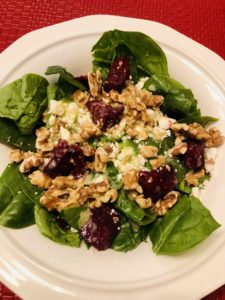By Dr. Alyssa Musgrove & Susan Kent
One of the most common questions I ask my patients is, “Are you drinking enough water?” Unfortunately, for most of us, the answer is “No.” I usually follow up with two additional questions. First, “How much water are you drinking?” And then, “What kind of water are you drinking?”
Finding ways to make water more enjoyable and accessible are among the suggestions I make when consulting with patients who need to up their water intake. For me, and many of my patients, having a reverse osmosis water tap makes drinking water easier and more enjoyable, while also removing potentially harmful impurities.
For this week’s article, I’ve asked local water filtration expert, Susan Kent, to share how the reverse osmosis process works, what contaminants are removed, and the benefits of having highly filtered, great tasting water right at the tap.
 The desire to have great tasting drinking water is nearly universal. The market is flush with fridge cartridges, replaceable filter pitchers, and faucet carbon filters. While these products can help improve the taste and smell of water, they do not have a significant impact when it comes to removing contaminants.
The desire to have great tasting drinking water is nearly universal. The market is flush with fridge cartridges, replaceable filter pitchers, and faucet carbon filters. While these products can help improve the taste and smell of water, they do not have a significant impact when it comes to removing contaminants.
Reverse Osmosis (RO) is a filtering method that removes virtually all contaminants from water. It is the highest level of filtration available for home use and produces exceptionally clean, great tasting water.
RO systems use pressure to push water through tiny pores to create pure water. A reverse osmosis system sends your regular tap water through several steps of purification. First, it passes through a sediment pre-filter designed to reduce larger particles such as silt, rust and scale. The second filter is typically an activated carbon pre-filter to help remove substances that can be attributed to tastes and odors. The activated carbon pre-filter is also able to reduce any chlorine that might be present.
Once the sediment and other contaminants have been reduced, the purification process is ready to begin. The RO membrane has a tight pore structure that is 500,000 times smaller than the diameter of a human hair. This membrane filters away contaminants such as bacteria, viruses, parasites, heavy metals, inorganic chemicals, pesticides and algae. The contaminants are trapped by the ultra-fine pores in the membrane, then sent down the drain. Water passing through the RO membrane is remarkably pure, but most RO systems will send the water through one final carbon filter to trap any lingering impurities. The result is polished, clean drinking and cooking water. Well maintained reverse osmosis systems reduce contaminants by up to 99.5%.
I am often asked if it is safe to drink unfiltered tap water. We are fortunate to have abundant water sources and generally safe public water systems in the United States, but that does not mean we have perfect water. Traditionally, government organizations play catch up when it comes to identifying what contaminants have found their way into our water, what levels are truly unsafe, and how to remove or prevent them.
Some contaminants, like calcium, manganese (common discoloration of local toilets), and iron are aesthetically displeasing but not inherently harmful. Other contaminants like PFOA/PFOS (also known as “forever chemicals), radionucleotides such as radium and uranium, and nitrates from farming and golf course treatments have been identified by the EPA to cause health issues at certain levels. Unfortunately, many of these chemicals were not regulated until after the harmful effects were established. Some consumers aren’t waiting to see what new chemicals will be added to the EPA’s list. They want more certainty about the water they are consuming and choose RO systems for a higher level of protection.
If you want to see what is in your drinking water, head to www.ewg.org. Click on Consumer Guides, select EWG’s National Tap Water Database, enter your zip code and select your neighborhood. EWG is a nonprofit organization that tests environmental contaminants and reports findings in regard to consumer health. (No need to sign in or give contact information. All information is available to the public for free.)
Reverse osmosis systems do require annual filter changes for the sediment and carbon filters. The membrane typically lasts 2-5 years, depending on usage. Most RO systems are designed for quick and easy filter changes.
Reverse osmosis drinking water produces on-demand, highly purified water and makes daily water consumption easier and more enjoyable. If your goal is staying hydrated and feeling good about the quality of water you are drinking, a reverse osmosis system might be an option for you.
Dr. Alyssa here: Keep in mind reverse osmosis systems cannot differentiate between “bad” ingredients and “good” ones. That means that, in addition to removing harmful contaminants, some of the essential trace minerals that our bodies need for optimal function – such as magnesium, calcium, phosphorus, sodium and potassium — are removed too. Remember, you do not sweat out just water; trace minerals need to be replenished through food or supplementation. Pathways to Healing offers flavored minerals to add back into your water after that sweaty tennis match or long game of golf. You can also buy unflavored minerals online. Trace Minerals is one of my favorite brands and can be found at traceminerals.com.
Susan Kent is the Director, VIP Accounts at Juturna. She can be reached at skent@juturna.com.




